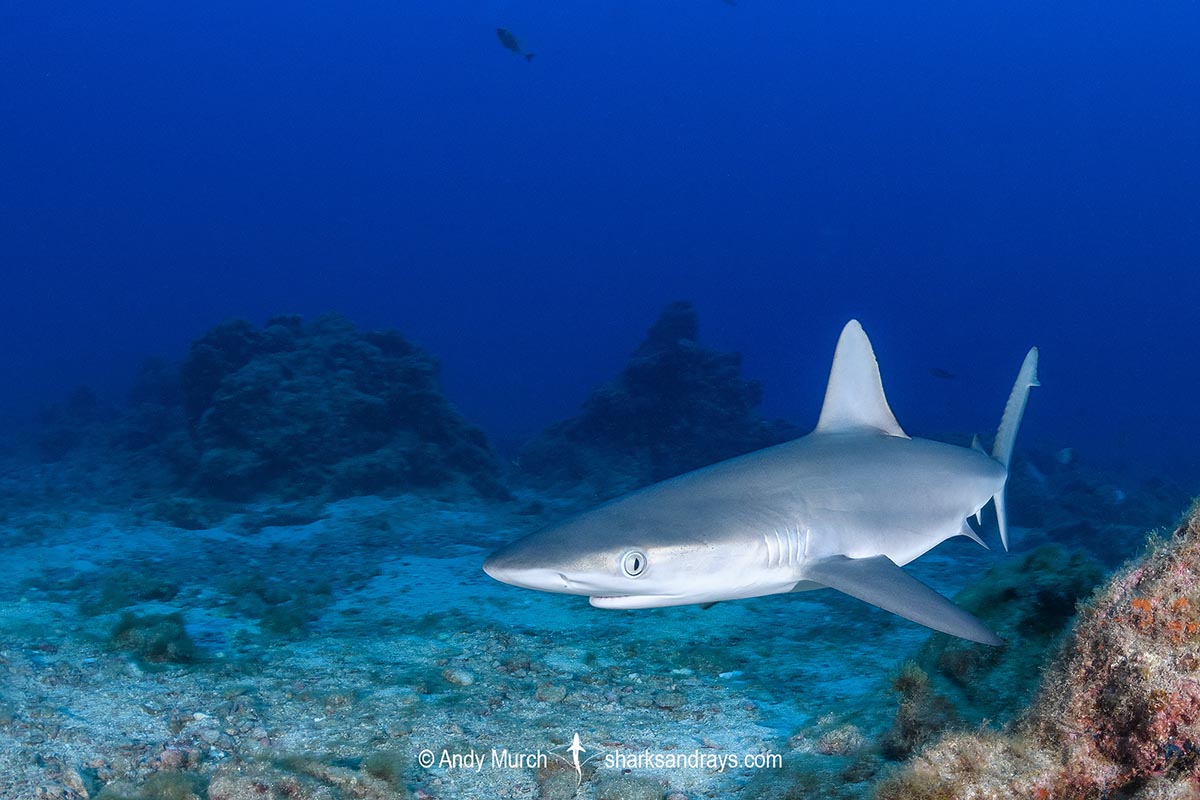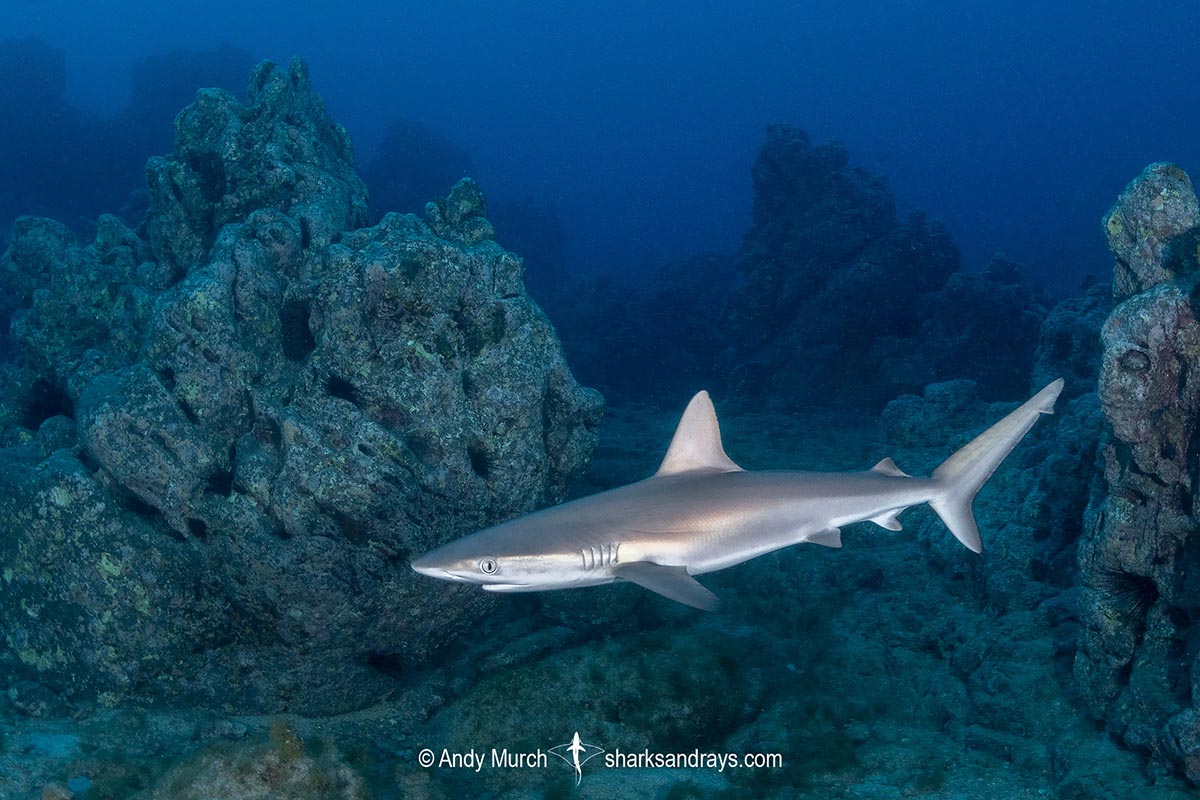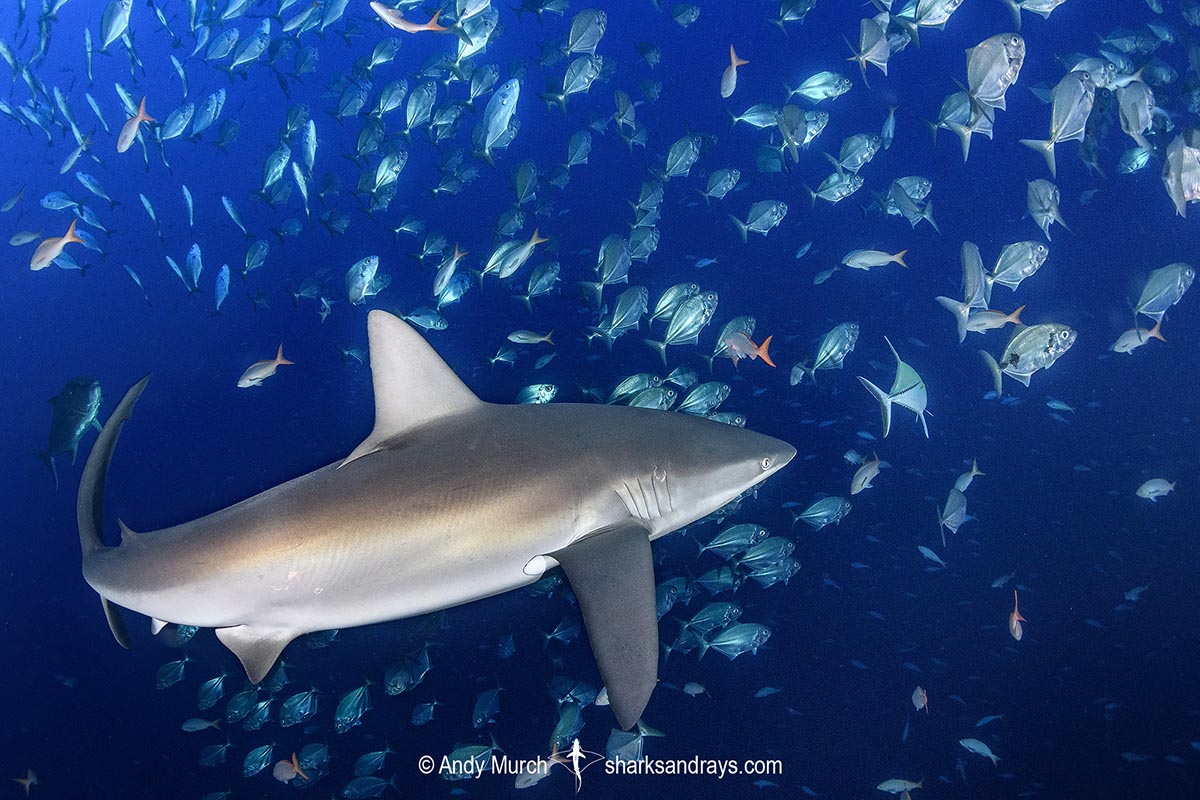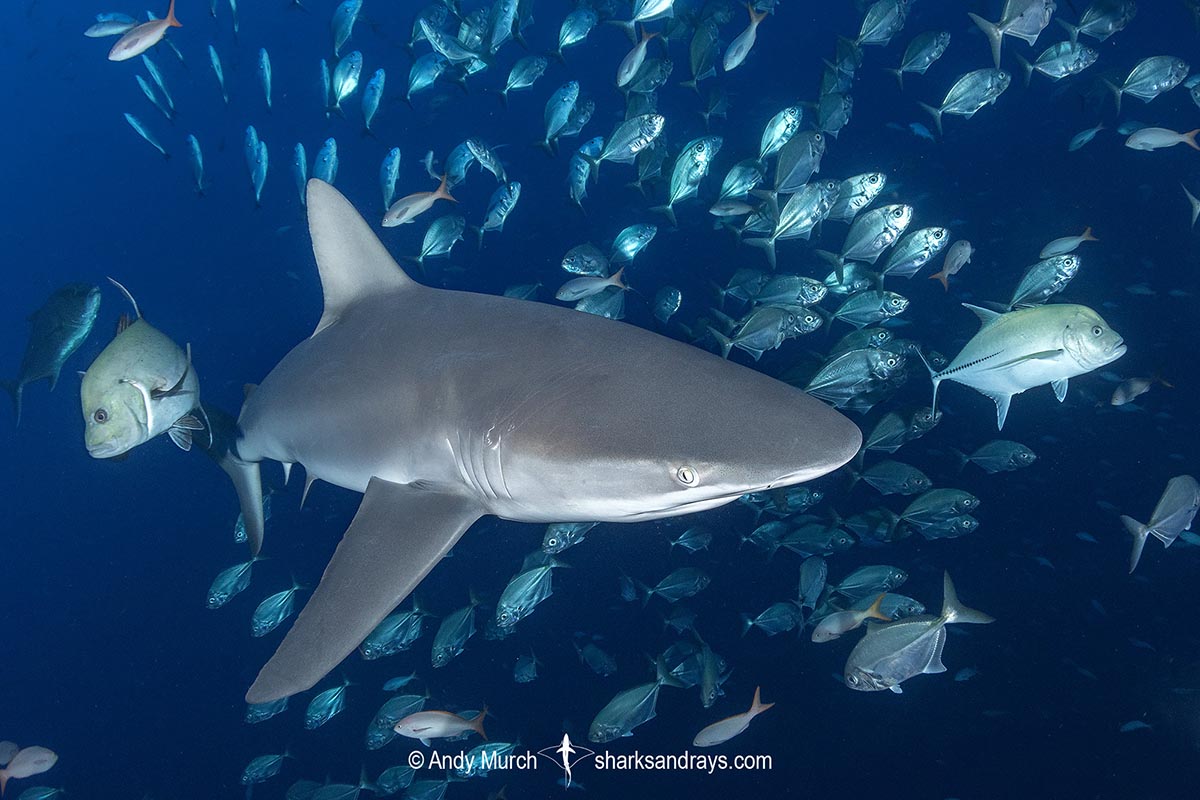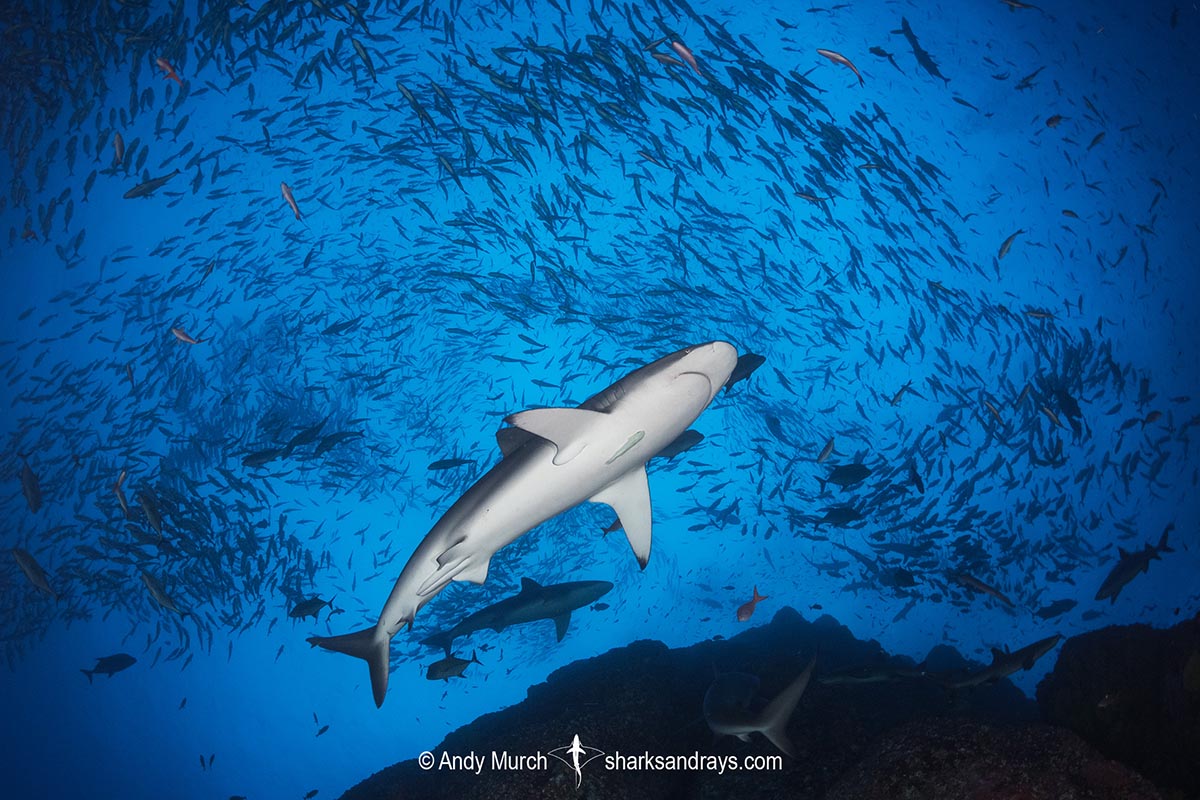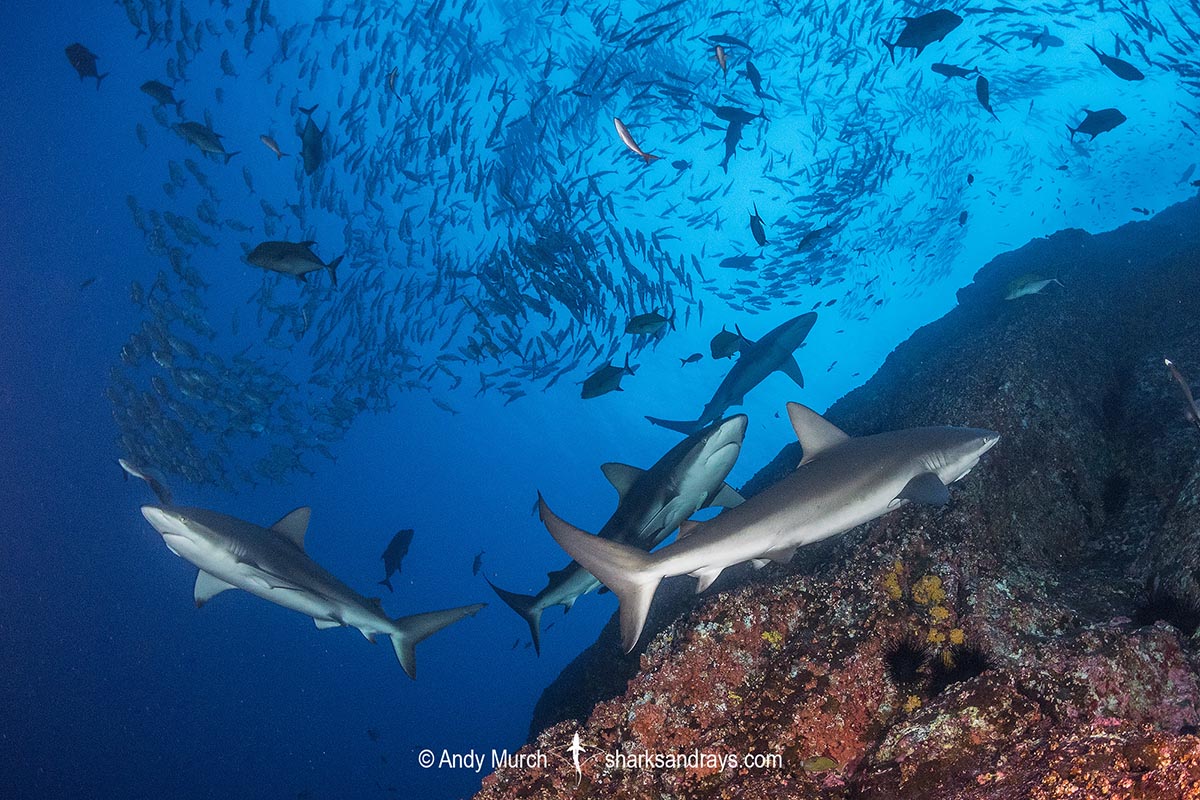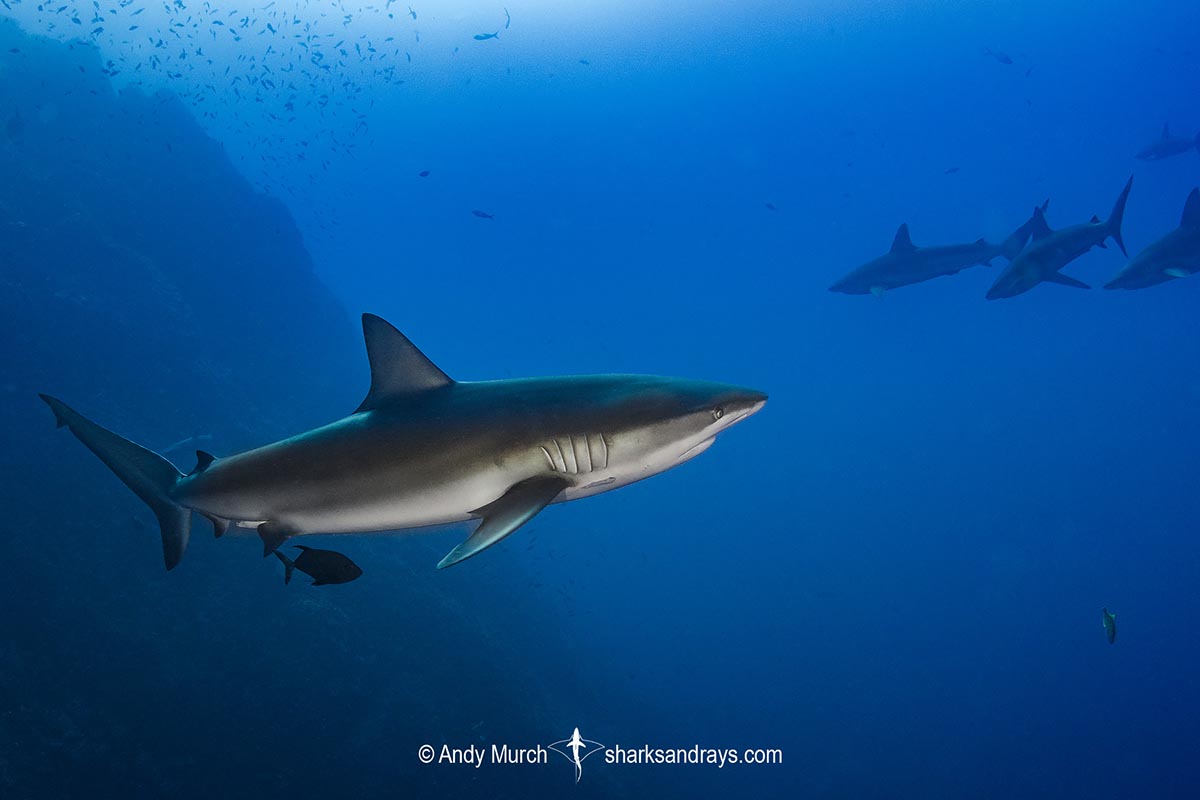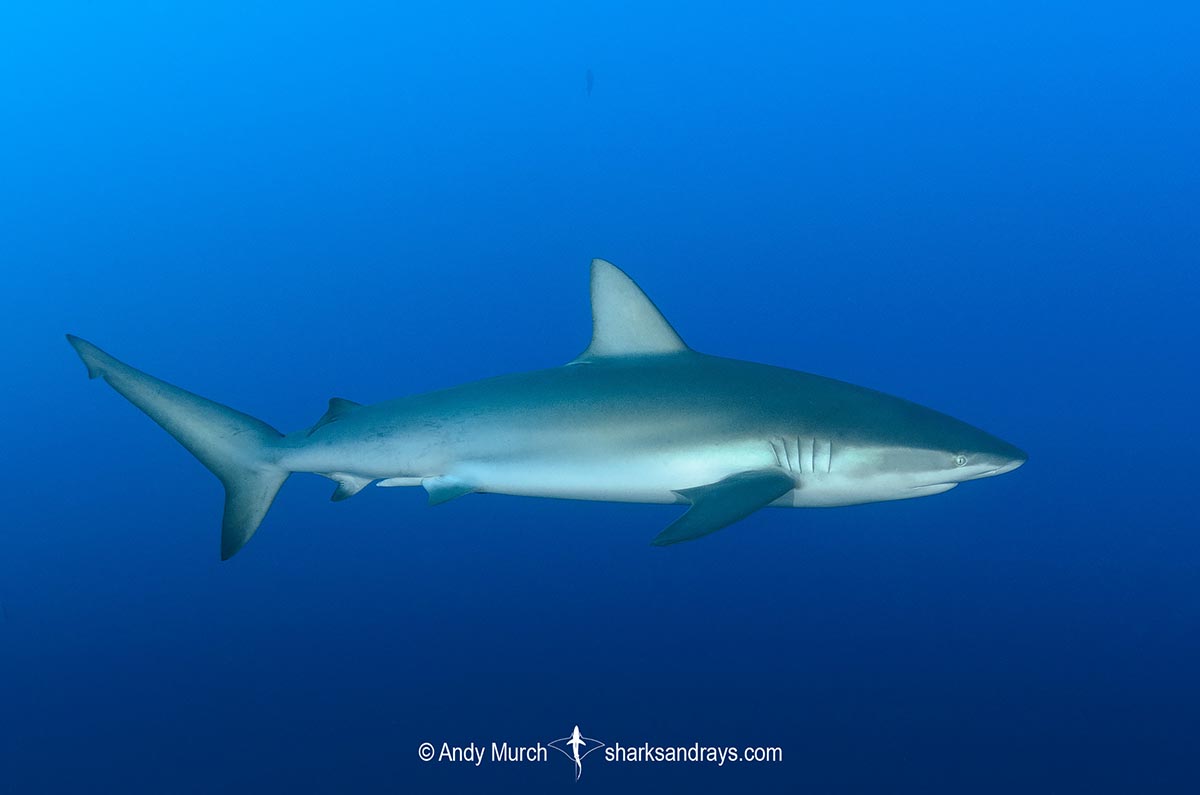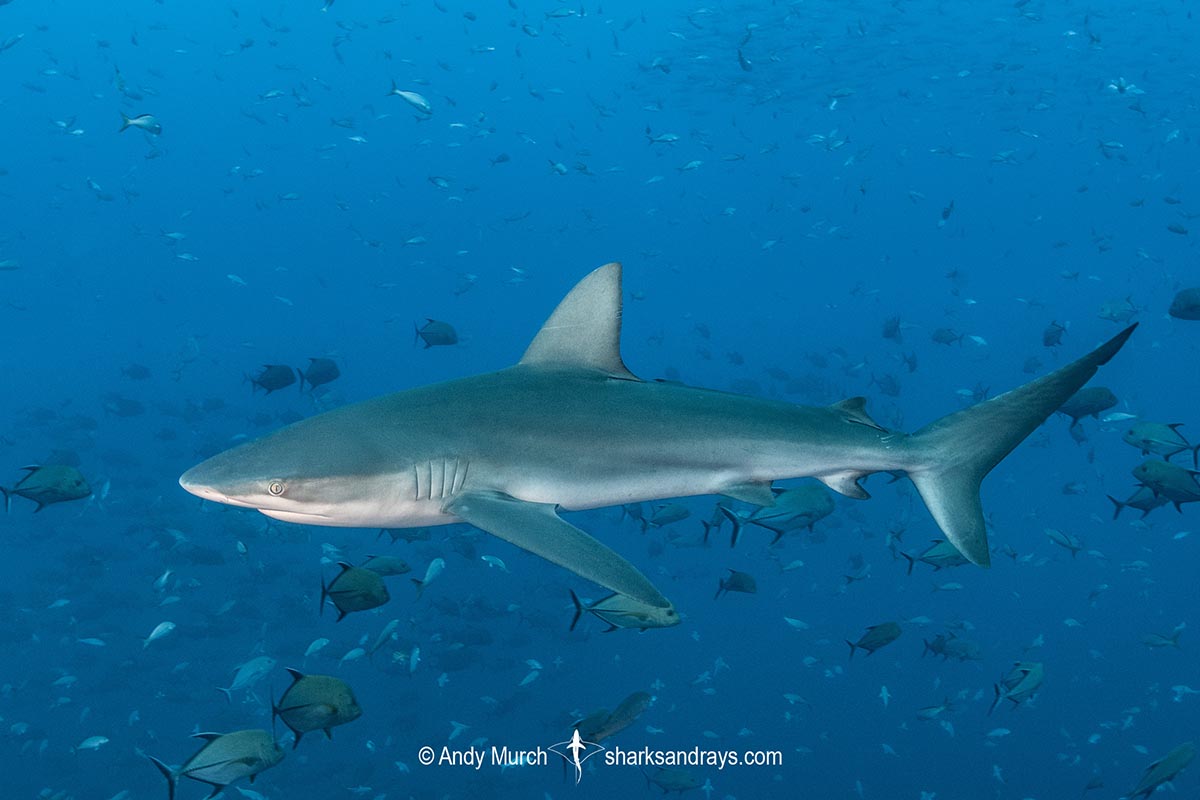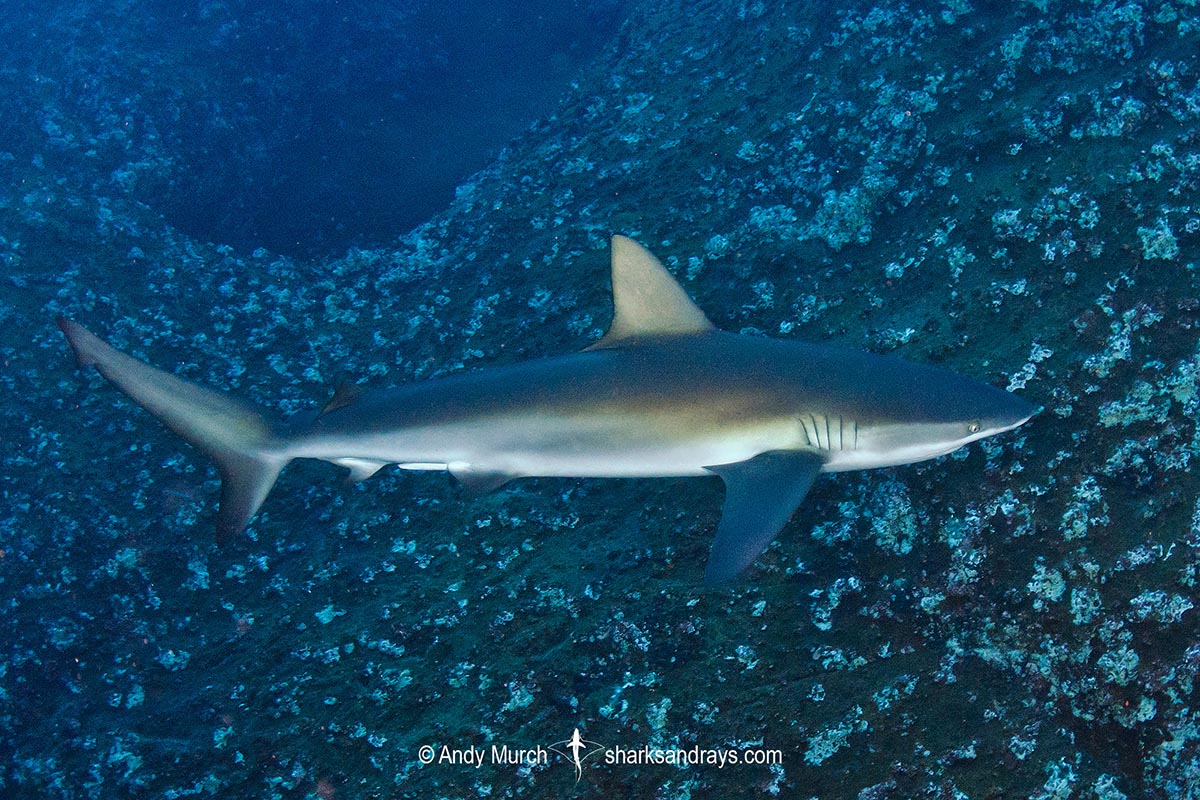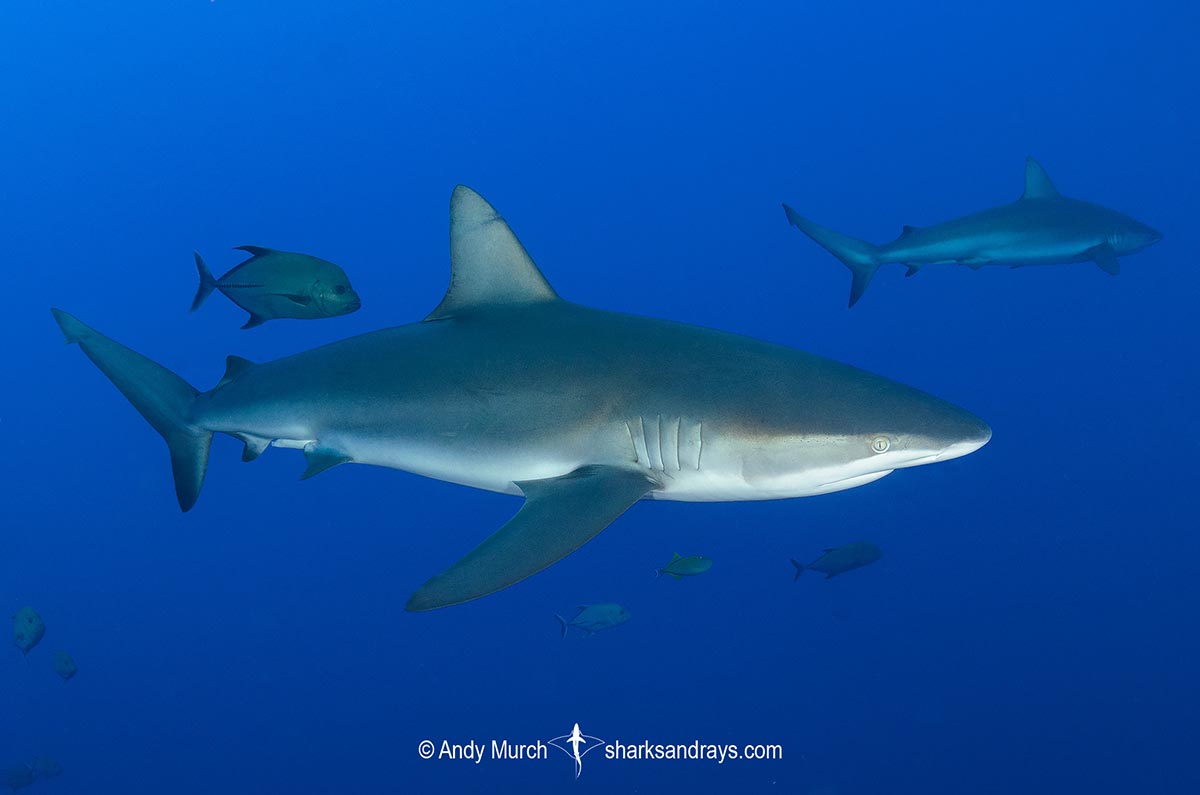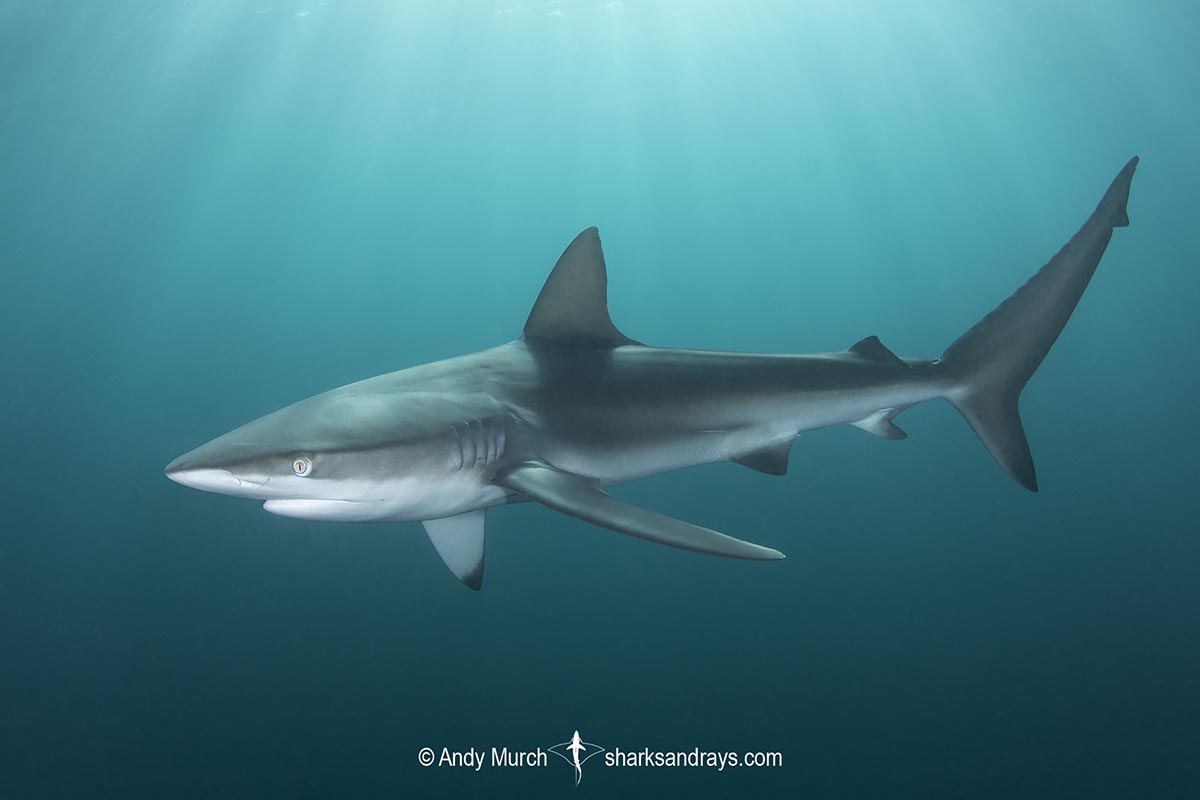Common names
Galapagos Shark.
Binomial
Carcharhinus galapagensis.
Synonyms
Carcharias galapagensis, Carcharinus galapagensis, Eulamia galapagensis.
Identification
A large bodied shark. Snout relatively short. First dorsal origin midway between pectoral fin insertion and free rear tip. Second dorsal origin roughly level with anal fin origin. Pronounced interdorsal ridge. Dorsal coloration brownish-grey. Fin tips (or posterior margins) sometimes dusky. Ventral tips of pectoral fins may be black.
Size
The maximum ‘suggested’ length of the Galapagos shark is 370cm (Kato et al. 1967). In 1982 Garrick expressed doubt about the measurement and noted that (at that time) the largest verified specimen was actually only a 292cm specimen from the Virgin Islands, measure by Randall in 1963.
Then in 1997 a 323cm Galapagos shark was caught and accurately measured in Brazil by A. Amorim. That shark is still officially the largest one ever caught but it doesn’t always come down to body measurements. In 1979, Jose Castro received a Galapagos shark jaw from a fisherman on Ascension Island. The upper third tooth measured 20mm across the cusp, which when compared to other known tooth measurements relative to body length, suggested that this shark was larger than any previously measured. Castro conservatively estimated the Galapagos shark’s maximum size to be ‘at least 330cm’ but it could clearly be bigger. Either way, this is an enormous carcharinid shark, exceeded only by the dusky shark.
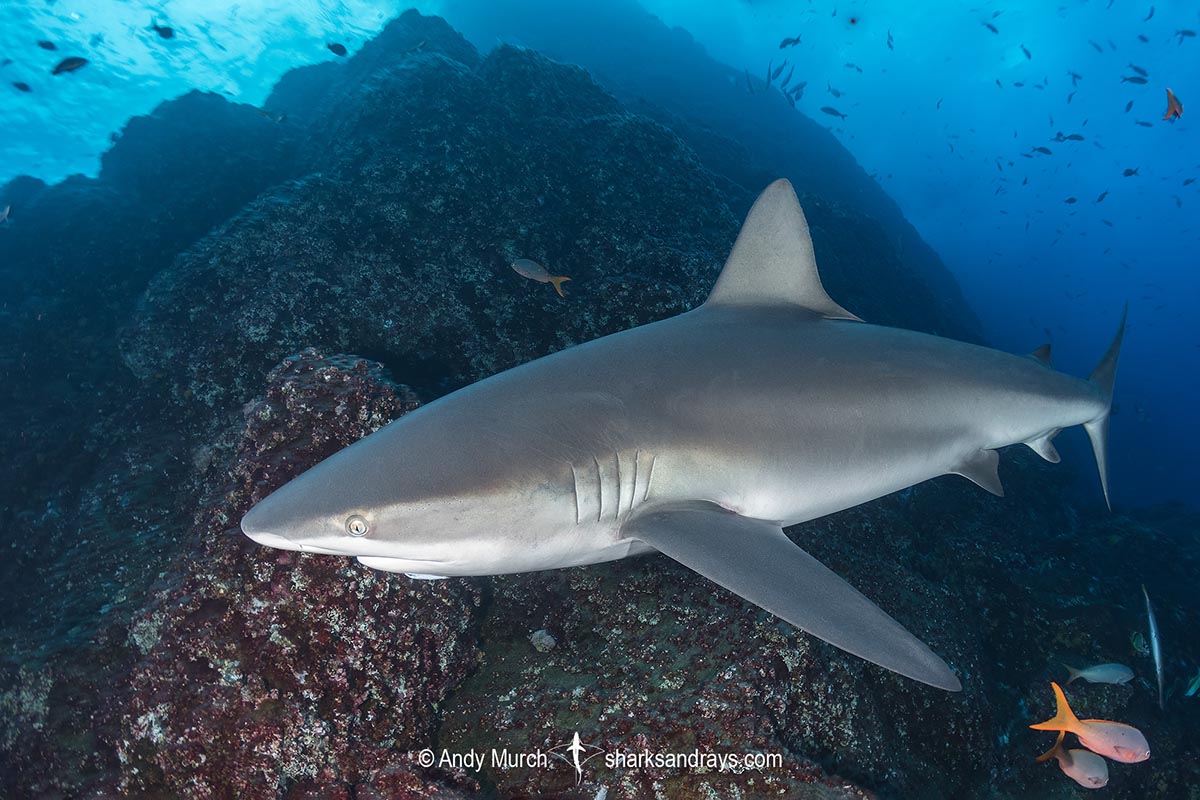
Conservation Status
LEAST CONCERN
The Galapagos Shark is caught as bycatch in commercial and small-scale longline, purse seine, and gillnet fisheries, both in pelagic oceanic waters and around islands and seamounts. Population reductions have been reported in Brazil and it is probably depleted elsewhere where fisheries are intense and unregulated. It is thought to be stable in much of its Pacific range, but it comes under pressure from illegal longlining around the seamounts of the eastern Pacific such as at the Galapagos Islands in Ecuador and Cocos Island in Costa Rica.
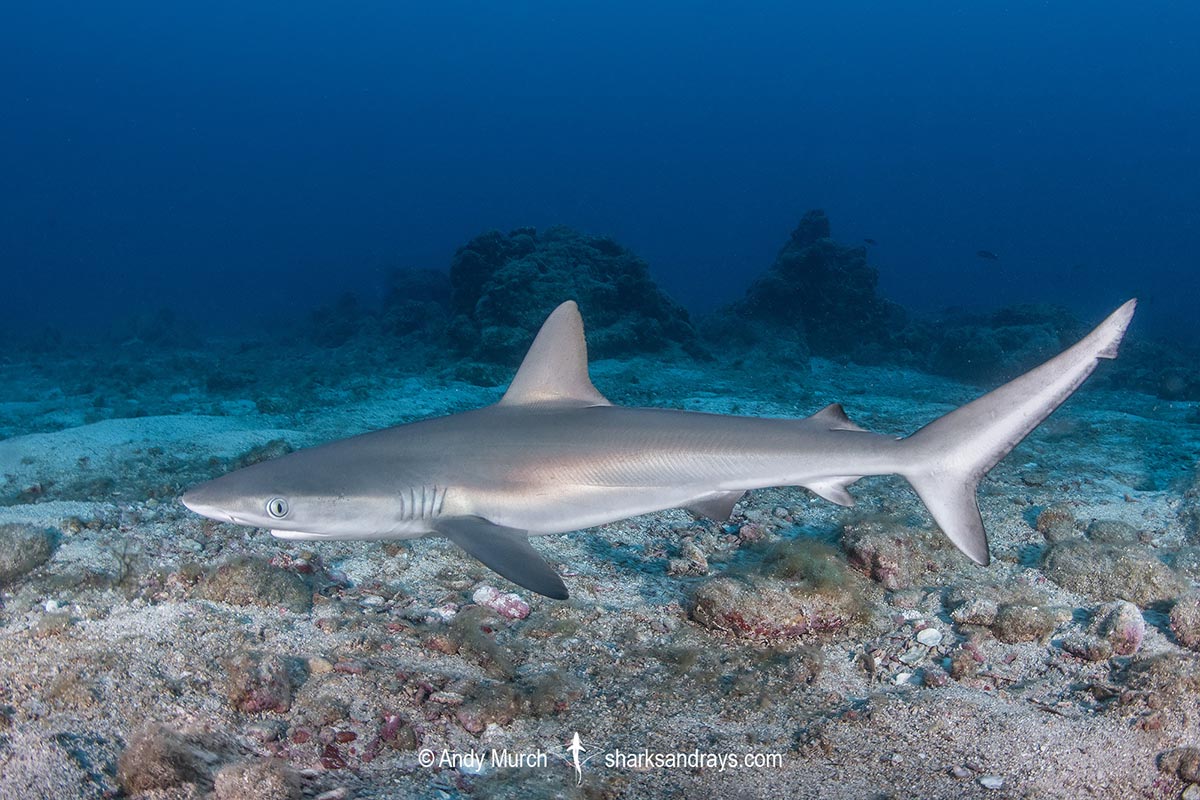
Habitat
The Galapagos shark favours clear, tropical water near coral or rocky reefs on offshore islands and seamounts. Rarely inshore. Although it will readily investigate disturbances neat the surface, prefers to swim a few meters above the reef.
Distribution
The Galapagos shark has a wide, but extremely patchy circumtropical distribution. It is especially abundant in the eastern Pacific at Socorro, Clipperton, Cocos, Malpelo and the Galapagos Islands, and in the central Pacific in the Hawaiian chain.
It is also common in many south Pacific island groups, and off the east coast of Africa near Madagascar. It appears to be absent from the northern Indian Ocean. It is also found off of West Africa and at a few seamounts in the central Atlantic. Very occasionally it also shows up off the eastern seaboard of the USA and off of Brazil but records from the western Atlantic are infrequent.
Reproduction
A viviparous species with yolk-sac placenta. 4-16 pups per litter. Gestation is approximately 12 months. Around Ascension Island, pups are born in late May/June.
Diet
Diet mainly consists bottom dwelling/reef fishes.
Behavior
Galapagos sharks aggregate around offshore islands where food is abundant but they do not appear to form polarized schools. Where they occur with other species, they show dominance over blacktip sharks but are subordinate to silvertips.
I have watch Galapagos sharks actively hunting among schools of jacks towards dusk at Roca Partida in the Revillagigedo Archipelago.
Reaction to divers
Fairly tolerant of scuba divers at sites where they are habituated to the presence of divers.
Diving logistics
Galapagos sharks are abundant at all of the popular offshore island diving destinations in the Eastern Pacific.
In the Revillagigedo Archipelago, the best sites for close up encounters are The Canyon at San Benedicto Island where they often buzz the cleaning station, and at Roca Partida; a slender, volcanic pinnacle rising 60m above the surrounding seabed. At the latter, the sharks tend to congregate on the up-current end of the reef. When the current is racing, this is the most difficult place to reach but the reward is worth the kick.
Cocos Island, Malpelo, and Wolf and Darwin are also excellent places to view this species.
Historically, distant Clipperton Island was an other spot but I have heard that overfishing has reduced the number of sharks there.
For those wanting a slam-dunk easy photo shoot, shark tour operators at Haleiwa on Hawaii’s North Shore offer baited shark cage snorkeling with Galapagos and sandbar sharks.
Similar species
Dusky Shark Very similar. distinguished by position of first dorsal fin which is level with or slightly anterior to the pectoral fin free rear tips. Other indicators are tooth shape and vertebral count but in the field, fin position is the best estimate. Generally speaking dusky sharks are more common around continental shelves and large land masses, whereas Galapagos sharks are more common off of oceanic islands and distant seamounts.

